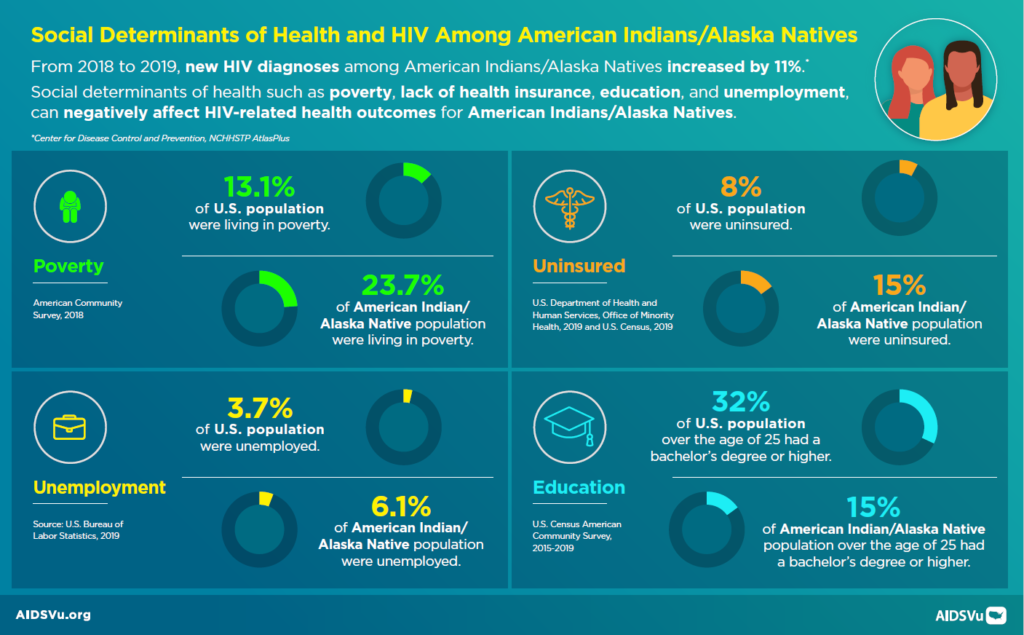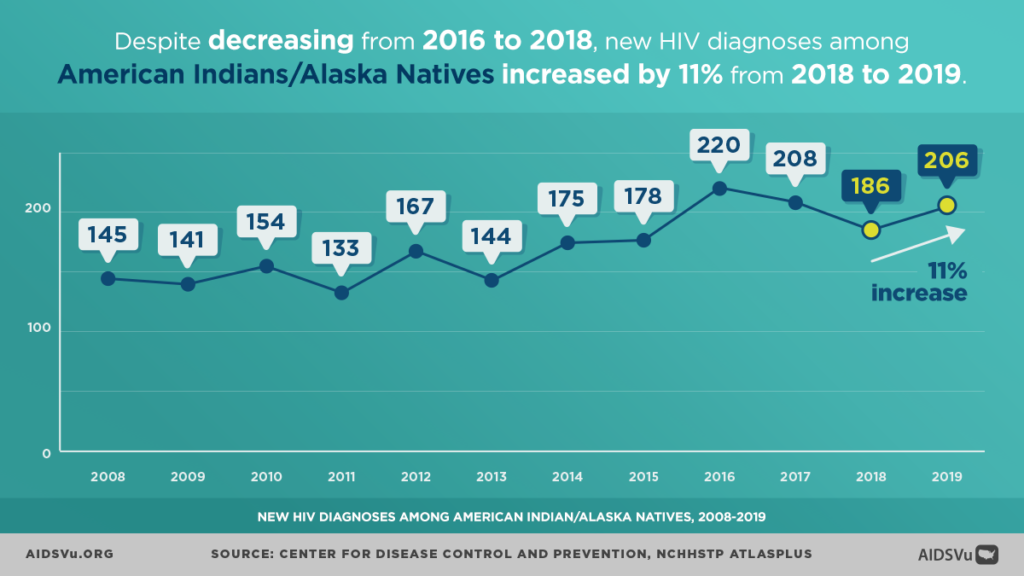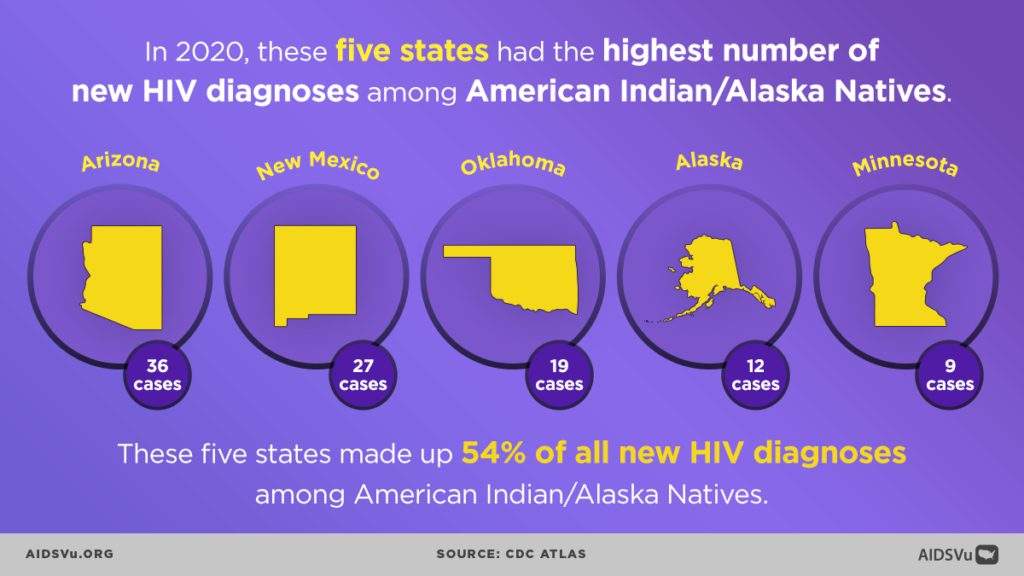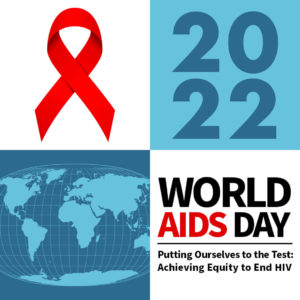
December 1st is World AIDS Day
This year’s theme for World AIDS Day is “Putting Ourselves to the Test: Achieving Equity to End HIV.” It encourages people to unite globally to eliminate the disparities and inequities that create barriers to HIV testing, prevention, and access to HIV care. First observed in 1988, World AIDS Day is a day to unite to help end HIV and remember those lost to AIDS-related illnesses.
Four decades into the HIV response, inequalities persist for the most basic services like testing, treatment, and condoms, and even more so for new technologies.
This #WorldAIDSDay, let’s unite to end the inequalities holding back the end of HIV/AIDS.
A Reflection from our Principal Investigators, Prescott Chow, MUP, and Monica Hahn, MD, MPH, MS, AAHIVS
“Each year, World AIDS Day allows us a space to commemorate and honor those we’ve lost to HIV/AIDS, while also affording us an opportunity to reflect on the progress we’ve made, lessons learned and challenges ahead. Forty+ years after the first AIDS cases were identified, we find ourselves in the midst of intersecting pandemics and unacceptable inequities which have persisted for decades. Today we recognize the collective challenges we still face. No doubt we have made much progress; we have highly effective HIV medications for prevention and treatment. We’ve made huge strides in medical technology in the last few decades, and that is NOT what’s holding us back in ending the epidemic. Let’s be crystal clear – systemic oppression in the forms of racism, poverty, homophobia, transphobia, stigma, and criminalization are what is holding us back – especially for people who hold multiple oppressed identities.
This year’s theme, ‘Putting Ourselves to the Test: Achieving Equity to End HIV,’ speaks to this truth. This theme resonates deeply with our values and vision for our work at THE Collaborative, including at our Pacific AETC and the Care and Wellbeing Center programs. On this World AIDS Day and every day, we reflect on how we can recognize, disrupt, and repair systems that perpetuate harm and inequity, and how we are centering communities most impacted and most marginalized in our everyday work. We recognize that anti-oppression and anti-racism are central to our work in the world of HIV prevention, treatment, capacity building, training and education, and it is our duty to interrogate and critique systems of oppression and how they operate to produce and maintain the inequities we see in the HIV landscape. It is with great gratitude and optimism that we engage in our work with a mission-driven team with collective hopes and dreams for future directions to advance and achieve health equity for all.
Everyone deserves access to quality HIV services. Let’s make it happen together.”
Monica Hahn, MD, MPH, MS, AAHIVS and Prescott Chow, MUP
Training & Health Equity (THE) Collaborative Principal Investigators
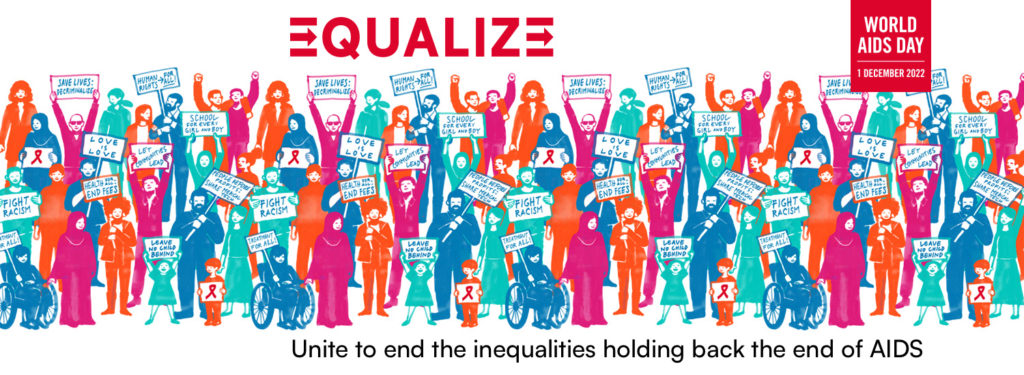
Our History: Pacific AETC
The Pacific AIDS Education & Training Center (Pacific AETC) is a member of a national AIDS Education & Training Center network of eight regional and two national centers, covering all 50 states as well as US Territories and Jurisdictions.
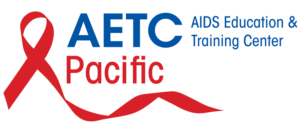
In October 1987, the Health Resources and Services Administration (HRSA) Bureau of Health Professions, under the Department of Health and Human Services (DHHS), established the AIDS Education & Training Center (AETC) Program to build the HIV clinical workforce in the United States. In the early days of the AETC, there were two Centers that served the Pacific region: the AETC for Southern California (led by the University of Southern California) and the Western AETC (led by the University of California, Davis). In the mid-90s, with encouragement from HRSA, the two Centers solidified. The University of California, San Francisco (where the Western AETC was housed) would lead the new entity, now known as Pacific AETC.
The AETC program continues to evolve and Pacific AETC continues to be at the forefront of practice and innovation. This includes highlighting emerging science and healthcare innovation, and our commitment to health equity. While the programming has evolved over the 30+ years of the AETC program, much of the work remains ongoing, urgent, and life-saving: ensuring healthcare professionals have the clinical and programmatic knowledge and skills needed to support care for people with or affected by HIV.
35th Anniversary of the AETC Program
Learn about the AETC network’s 35 years of supporting the HIV care community. The following video celebrates the program’s history, accomplishments, and milestones in response to the HIV epidemic since 1987:
Resources
HIV affects everyone. This World’s AIDS Day, let’s help #StopHIVStigma. Everyone, everywhere must have access to health and HIV services without fear of stigma, discrimination and criminalization. Access the CDC’s Stigma Language Guide to learn how to talk about HIV in a way that is not stigmatizing.
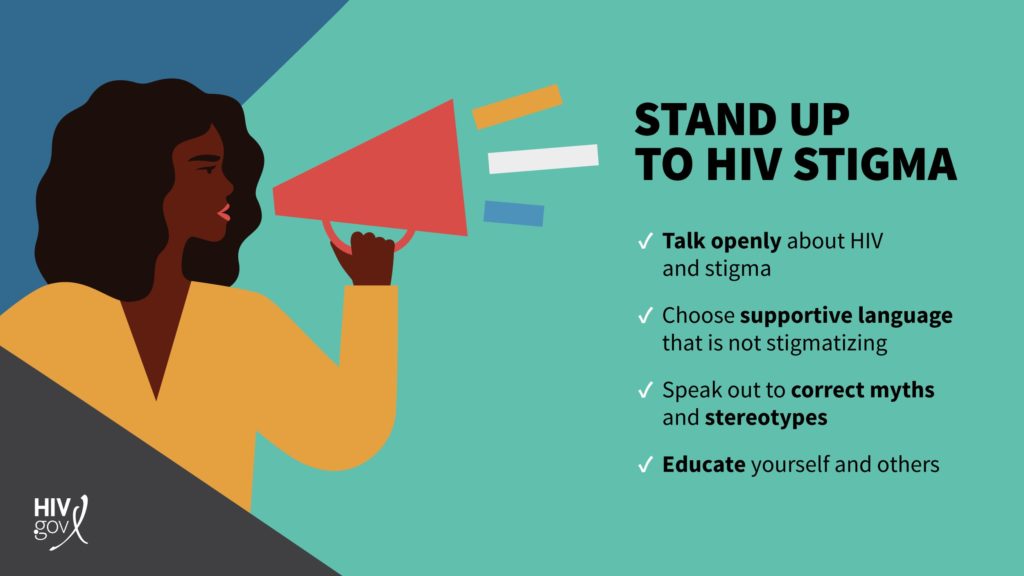
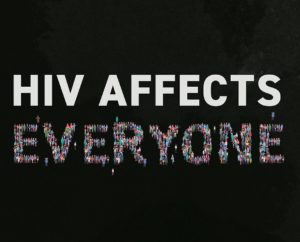
To honor this year’s theme of equity, we’ve compiled some of Pacific AETC’s stigma and racial equity trainings.
PrEP Ready! Community of Practice: Building your Community’s HIV Prevention Capacity with a Health Equity Lens (On-Demand)
PrEP Ready! Community of Practice is a peer-to-peer EHE learning community to strengthen equitable PrEP programming at FQHCs. This session was presented by members of the West Region CDC Capacity Building Assistance Providers from California Prevention Training Center, Denver Prevention Training Center, and San Francisco Department of Public Health – Center for Learning and Innovation.

HIV Learning Network – HIV and Harm Reduction: A Cultural Approach (Upcoming)
Description: Harm reduction strategies help to lessen the harms associated with drug use and related behaviors to increase the risk of HIV infection. Harm reduction plays a significant role in preventing drug-related deaths and offering access to treatment, social services, and healthcare. Current narratives around harm reduction and recovery are dominated by a white lens, depicting white communities as the most vulnerable victims of the current opioid crisis. From 2015 – 2020, there was a 213% increase in overdose death rates for Black men – the largest increase experienced by any demographic group (Black Harm Reduction Network). In this session, Dr. Gigi Simmons will explore the history of HIV and harm reduction in the Black community, and examine how the media portrayal of HIV and harm reduction shape our views of how we approach harm reduction with Black people with HIV.
HIV Learning Network – HIV Stigma & LBGT Communities (On-Demand)
Description: LGBT Communities are disproportionately affected by HIV. Men who have sex with men and transgender people experience stigma and discrimination that can negatively affect their engagement and retention in HIV care and prevention services. In this session, Shawn Demmons, MPH, will discuss and define the different types of stigma that affect these communities and the impact that stigma has on these communities, and discuss strategies to reduce stigma on a intrapersonal, communal and organizational level.
Understanding the Impact of the Structural Racism on Clinical Care: Lessons from HIV and COVID-19 (On-Demand)
Description: In order to understand how health inequities in various chronic disease such as HIV and SUD occur, it is necessary to examine their associations with longstanding structural racism. This on-demand course will provide an overview of structural racism in the context of the clinical care and review what lessons have ben learned from the HIV and COVID-19 pandemics that can inform future work, and help to interrogate systems and structures which perpetuate structural racism in order to take steps to move toward providing services with an anti-oppression and anti-racism lens. Presented by THE Collaborative Principal Investigator, Monica Hahn, MD, MPH, MS, AAHIVS.
HIV Learning Network – Culturally-Based Programs to Improve Engagement and Health Outcomes: Addressing Stigma for Native Hawaiian with HIV (On-Demand)
Presented by Malulani Orton, Native Hawaiian Medical Case Manager, Hawai’i Health & Harm Reduction Center.
New: PrEP Ready! Community of Practice Past Sessions Available
PrEP Ready! CoP is a peer-to peer EHE learning community to strengthen equitable PrEP programming at FQHCs in the Pacific Region. Sessions are created to help to enhance the various aspects required to offer successful PrEP delivery services with a health equity lens. While PrEP Ready! CoP session are only open to FQHCs in EHE jurisdictions in the Pacific Region, we believe all healthcare organizations offering PrEP can find the materials developed useful.
Below is a list of past session with registration links to view the archived recordings, slides, PrEP implementation tools, and other materials developed for each session. Click on each title to register!
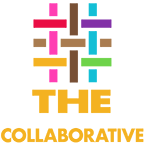

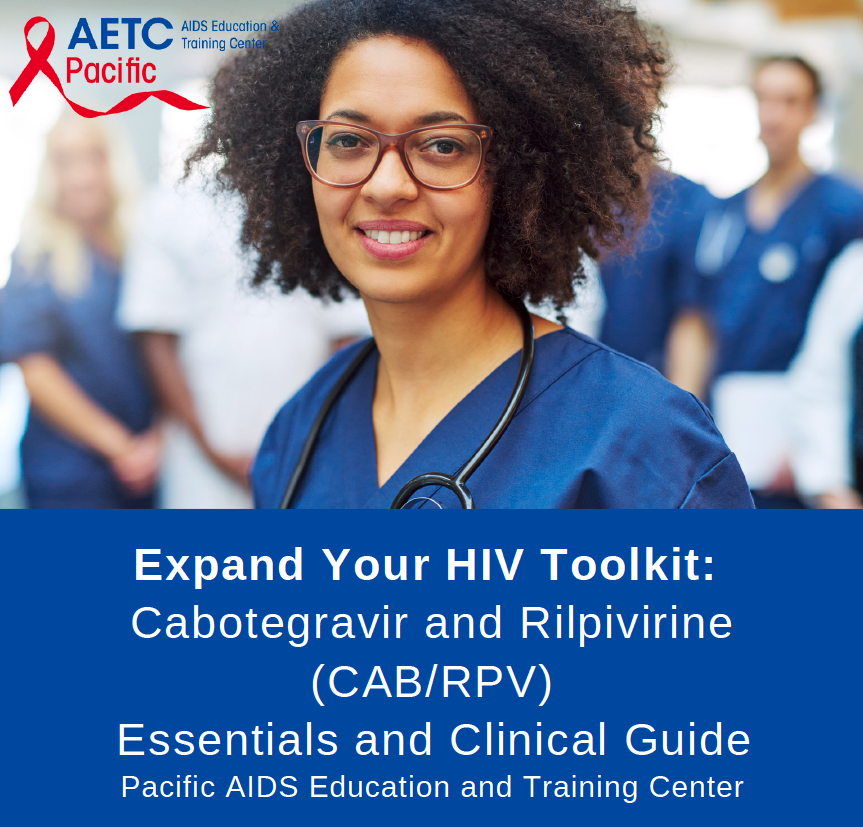
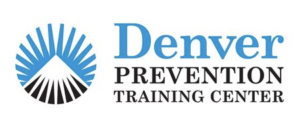 More than 160,000 Americans are unaware they are living with HIV. Diagnosing HIV is critical to the success of the Ending the HIV Epidemic in America initiative (EHE). How can we assist clinical providers in identifying individuals who would not otherwise receive HIV testing? Research demonstrates large-scale HIV screening in the emergency departments and urgent care settings using existing staff and resources, regardless of patient selection strategy, does not impact care processes or patient flow.
More than 160,000 Americans are unaware they are living with HIV. Diagnosing HIV is critical to the success of the Ending the HIV Epidemic in America initiative (EHE). How can we assist clinical providers in identifying individuals who would not otherwise receive HIV testing? Research demonstrates large-scale HIV screening in the emergency departments and urgent care settings using existing staff and resources, regardless of patient selection strategy, does not impact care processes or patient flow.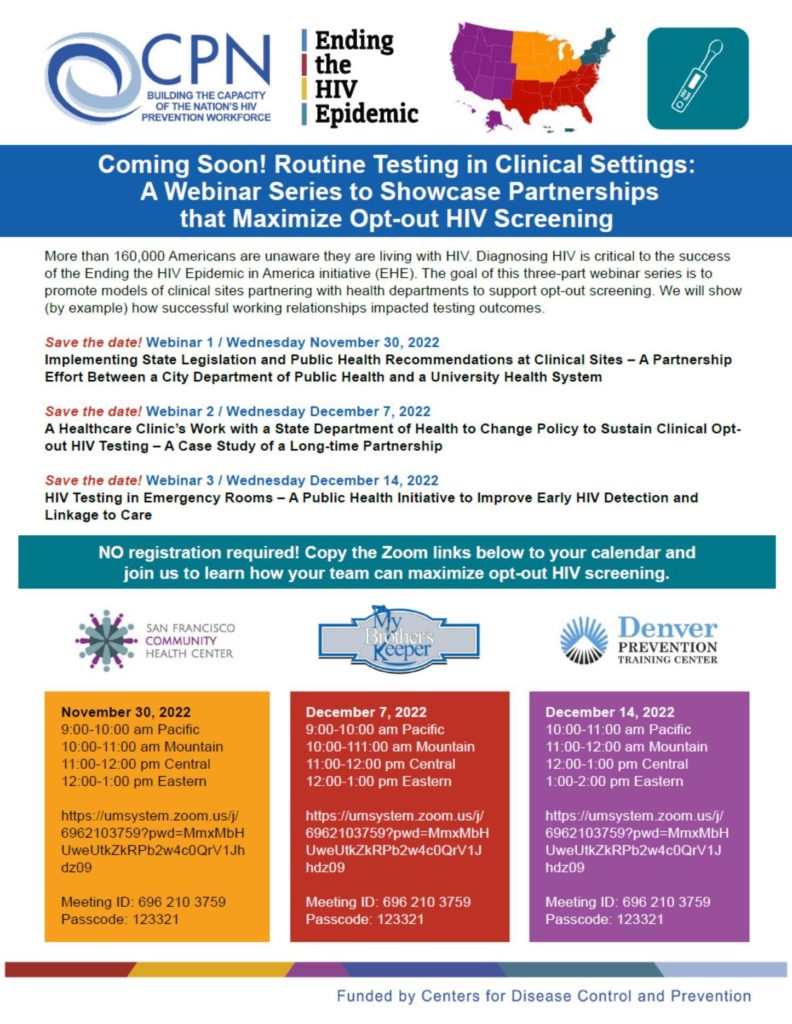
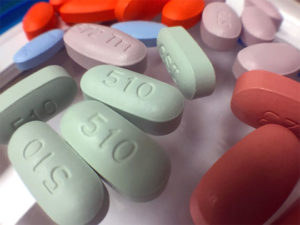 Starting antiretroviral treatment (ART) early in the course of HIV infection when the immune system is stronger results in better long-term health outcomes compared with delaying ART, according to findings presented at the IDWeek Conference in Washington, D.C.
Starting antiretroviral treatment (ART) early in the course of HIV infection when the immune system is stronger results in better long-term health outcomes compared with delaying ART, according to findings presented at the IDWeek Conference in Washington, D.C.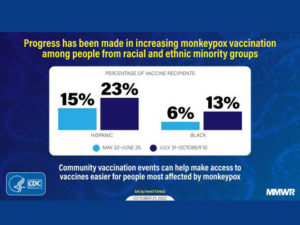
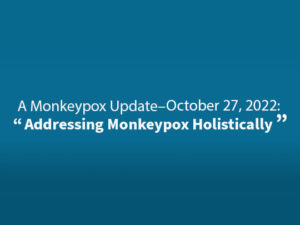 From day one of the Biden Administration’s response to the Monkeypox outbreak, we have recognized that Monkeypox is not a virus that lives in isolation. It exists as a part of a number of acute and chronic outbreaks and health challenges that interact with each other and can be impacted by social circumstances that worsen disease outcomes. Such interacting epidemics, or “syndemics,” require responses beyond traditional disease-specific healthcare delivery and to also address associated social determinants of health. That’s why we have worked closely—and successfully—within the Administration and with our partners in public health, the LGBTQI+ community, and with community-based organizations—to combat and treat this virus using a holistic approach, that takes all of these factors into consideration.
From day one of the Biden Administration’s response to the Monkeypox outbreak, we have recognized that Monkeypox is not a virus that lives in isolation. It exists as a part of a number of acute and chronic outbreaks and health challenges that interact with each other and can be impacted by social circumstances that worsen disease outcomes. Such interacting epidemics, or “syndemics,” require responses beyond traditional disease-specific healthcare delivery and to also address associated social determinants of health. That’s why we have worked closely—and successfully—within the Administration and with our partners in public health, the LGBTQI+ community, and with community-based organizations—to combat and treat this virus using a holistic approach, that takes all of these factors into consideration.